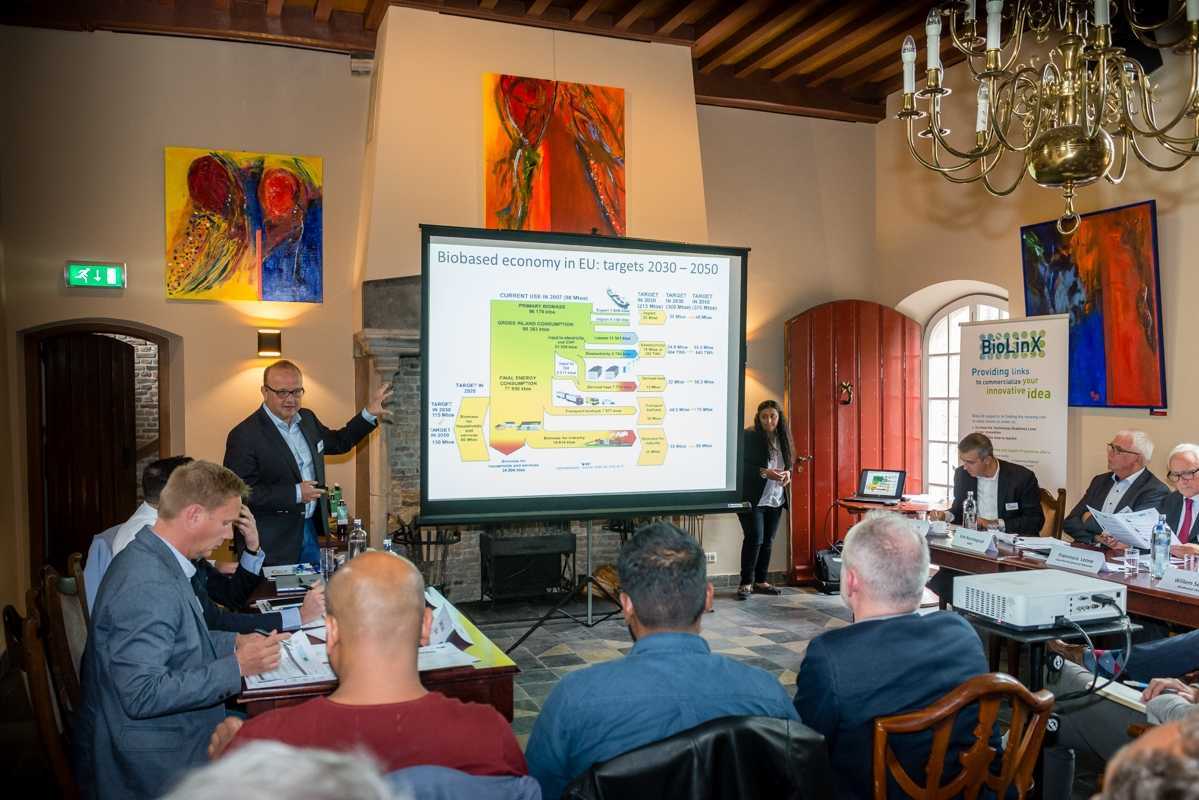Dennis van der Pas (REWIN West-Brabant) has been managing the above project since 2015. The end date of BioLinX is mid-2018. ‘BioLinX was set up at the request of the European Commission. It saw that many research programmes under the FP7 programme were not resulting in the market introduction of biobased products. That explains the desire of the European Commission to support project owners. That applied to us, that is BioLinX, especially for the projects under the flag of the FP7-Biobased Economy and later also for the Horizon 2020 projects.
The FP7 and Horizon 2020 programmes now cover more than 500 research projects, varying from large flagship projects aimed at the pilot production of biobased molecules to smaller procedures targeting a specific process. Van der Pas: ‘All shades of green were present. That is why we deliberately chose to focus on agriculture and forestry in the project design. In doing this we were also in line with the regions which were involved in the project from the start: southwestern Netherlands, southwestern Sweden and northern Italy.’
Matchmaking
The question is: what does BioLinX actually do? Well, it encompasses a range of services (with a budget of approximately EUR 2 million) with which it can support businesses, consortiums or clusters. ‘First and foremost it is about networking,’ says Roald Suurs (TNO), one of the work package leaders at BioLinX. ‘Many companies do not have a clear overview. As a consortium we have built up good contacts in Europe, so we can get parties connected quite quickly. We organise international brokerage events (editor’s note: knowledge sharing and matchmaking) ourselves, which we organise according to themes. This increases the chance that parties are on the same wavelength.’ TNO developed a method for gathering information about biobased regions. Suurs applied this method at BioLinX, together with the partners, to 12 European regions. In the studies performed by the consortium, the regions were analysed on matters such as their assets (businesses, research institutes, etc.) and the needs. ‘This kind of exercise is necessary so that we can ultimately perform a good networking role,’ according to Suurs.
Hurt
Besides providing support for finding the right partners, BioLinX also helps entrepreneurs with their questions about knowledge. The website, biolinx-project.eu, contains information about intellectual property (IP) and an overview of what is for sale. ‘Companies may think they have developed a unique process or product,’ explains Van der Pas. ‘That can make things unpleasant if their concepts infringe the IP rights of others. It is better if you can prevent that.’ According to Van der Pas and Suurs, entrepreneurial skills are essential if research projects are to continue to grow. That applies mainly to the TRL 4/5 phase. ‘Often it will hurt,’ says Van der Pas. ‘Processes that have to be scaled up, a need for more capital and stricter requirements on entrepreneurship. Not every project or innovation owner is cut out for that. He or she will need help to develop these skills. We do that through various training sessions and seminars. For instance, TNO provides a session on Intellectual Property. In that, we pay attention specifically to funding, which is one of the largest obstacles for businesses to overcome. Through BioLinX we can make these businesses aware of funding possibilities which are not immediately obvious. We also train people in how to pitch their process or product to venture capital investors. The participants are given practical tips they can use to prepare themselves as best as possible for difficult questions from these parties. In the end we also bring them into contact with investors.’
Designing an ecosystem
Two thirds of the term of BioLinX have already passed. Has the project achieved actual results? ‘Definitely’ is Suurs’ answer. ‘BioLinX was set up according to TNO’s Reflective Monitoring methodology. That allows us to monitor the impact of the project quite regularly. ‘We are involved in a total of 60 projects with FP7 and Horizon 2020. Our impact is mainly on the process. As explained earlier, we support project owners in various areas, so that we do not see the results back immediately one-on-one. That does happen with networking. For example, we brought a party from Scandinavia that was working with lignin into contact with a Dutch manufacturer of coatings. PNO helped an Italian partner set up a new consortium aimed at the valorisation of residual streams from the food industry in three different regions. Did we help parties get through the TRL 4/5 phase faster, as we originally intended? I think it is still too early to know. We have contributed to the design of an international ecosystem in which parties from diverse regions can find each other more easily. This network is ultimately also necessary for realising biobased processes and products, preferably in the regional clusters which come under BioLinX. Businesses will continue to benefit from this ‘legacy’ even after BioLinX has been rounded off.’



